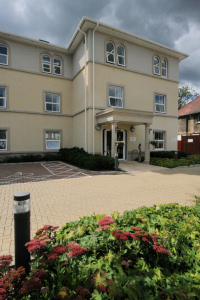Woodridings
Woodridings, Harrow
No longer identified on most maps, Woodridings was an early commuter estate situated between the River Pinn and Uxbridge Road in south-west Hatch End

Following the arrival of the railway, the first 50 houses were laid out on former farmland here in 1855. Borrowing an Italianate design lately used in Swiss Cottage and St John’s Wood, the properties were intended to attract families who wanted a grand residence but could not afford a more exclusive address.
Large, semi-detached houses with ostentatious façades and gentrified names were set well back from the roads. Most homes had two or three servants, often drawn from nearby Pinner.
Admiral Nelson’s daughter Horatia and two of her married sons bought three houses on the Woodridings estate.
Samuel Beeton and Isabella Mayson married in July 1856 and the following month moved into a newly-built home on Uxbridge Road – one of a pair of red-brick houses called Chandos Villas. Here in 1859 Isabella began writing the articles that became Beeton’s Book of Household Management. The Beetons left Woodridings in the autumn of 1861.

Milk was delivered to the Woodridings estate from Woodridings Farm, which occupied the north side of Uxbridge Road until the land was developed in the mid-1920s.
Chandos Villas were destroyed by a direct hit in the Blitz and a shopping parade now stands in their place.
Only one structure survives from the original Woodridings scheme: a pair of three-storey, stuccoed villas at numbers 40 and 42 Wellington Road, shown in the photograph at the top. Next door, the front façade of the recently built Haven care home has been pleasingly designed to echo the villas’ appearance.
Elsewhere, the locality now consists of a mish-mash of municipally and privately built properties, dating from between the wars to the present century.
